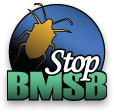- HOME
- » ABOUT US
- » Reports/Presentations
- » Presentations and Posters
- » Stakeholder Advisory Panel Meeting, November 2016
Stakeholder Advisory Panel Meeting, November 2016
Presentations
- BMSB SCRI I Project: Objectives, Key Findings, Questions – Leskey
- Status of BMSB in the Mid-Atlantic – Kuhar
- Status of BMSB in the Southeast – Toews
- Status of BMSB in the Great Lakes – Gut
- Status of BMSB in the Pacific Northwest – Beers
- Status of BMSB in the West – Daane
- BMSB SCRI II Project: Summary of Objectives and Plans for 2016–2017 – Walgenbach
- Biological Control of BMSB (Predators and Parasitoids) – Hoelmer
- Trap Designs and Lures – Leskey
- Landscape Ecology Modeling – Crowder
- Economics – Harper
- Spatially Focused Management and Habitat Manipulation – Nielsen
- Extension and Outreach: Measuring Social Benefits of Improved Conditions – Liu
- Extension and Outreach: Communications Review – Gonzales
